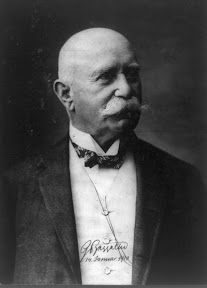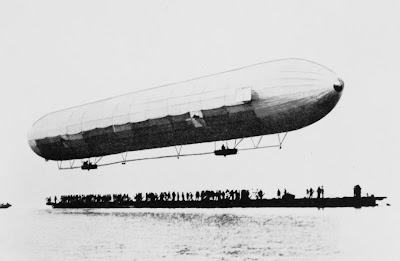Site Links
The Greatest German Airship
A desperate symbol of peace and reconciliation in a crazy world, the mighty Graf Zeppelin spread goodwill across the planet until overwhelmed by the unwelcome tides of change.

When people hear the term “zeppelin” most will vaguely recall either some type of gas-filled blimp or balloon, a wild ‘70s rock band or the cataclysmic explosion of the swastika-emblazoned Hindenberg in 1937. Close, but no cigar.
Zeppelin was, in fact, Graf (Count) Ferdinand von Zeppelin, a German aristocrat and army officer who is credited with the invention of the first rigid airships that went on to bear his name.
The Count (left) was looked upon by his peers as something of a crank and quickly exhausted his personal funds and those of his few investors with the unsuccessful development of his first prototype airship, (Luftshiff Zeppelin) LZ1. It was ungainly and underpowered and ultimately would die under the weight of criticism and be broken up and sold for scrap.
Coincidently one of the first critics was a freelance journalist stringing for the Frankfurter Zeitung, Dr Hugo Eckener. The 32-year-old economics writer enjoyed the spectacle on scenic Lake Constance in the south of Germany, but decreed the airship simply an interesting experiment and of little future value. How those prophetic words would haunt him.
Count Zeppelin read Eckener’s report and decided to pay his critic a visit in early 1906 to straighten a few things out with the young whippersnapper. This meeting was perhaps the most important single moment in the airship history because, after some badgering by the crazy Count, Eckener agreed to publicise his next project and raise funds for its development.

LZ1 launches from a barge and flies for less than 20 minutes. 1 July 1900.
LZ2 had crashed, but LZ3 was built with more powerful engines and some important modifications that enabled stable flight, structural rigidity and improved control. A new and enthusiastic engineer, Ludwig Dürr was retained and designs were beginning to impress the Kaiser and previously sceptical government. Dürr would go on to design all future zeppelins.
In 1909 the first commercial passenger flights began with DELAG (Deutsche Luftschiffahrts-Aktiengesellschaft), effectively the world’s first commercial airline. By 1913, DELAG had established a route network between Frankfurt, Düsseldorf, Baden-Oos, Berlin-Johannisthal, Gotha, Hamburg, Dresden and Leipzig.
Eckener, in the meantime, had risen to become one of the foremost airship captains with an uncanny ability to read weather patterns and predict flying conditions thanks to his time as an amateur, but expert, sailor. He personally saw to the training of all future airship crew and was soon revered as the world expert on airship flight.
More >> The Zeppelin as a Weapon of Terror
All
material, unless otherwise noted, is copyright to the author and
may not be used, reproduced or mirrored without express consent
in writing. Permission is not specifically sought for linking, although
the author does appreciate notification.
|